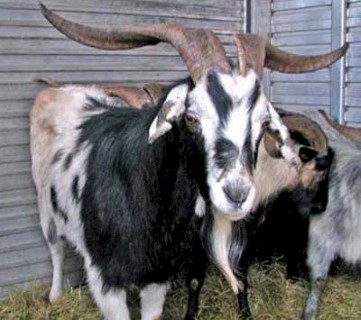Spanish Goats, also called
brush goats or scrub goats, came originally from Spain via Mexico to the USA. They
are now a meat and brush-clearing type found widely in the United States. In
the Southeast and elsewhere, they are often referred to as "wood"
(Florida), "brush" or "briar" (North Carolina, South
Carolina), "hill" (Virginia), and "scrub" (midwest
Pennsylvania) goats. Until recently, these goats were kept mainly for clearing
brush and other undesirable plant species from pasture lands.
Around the 16th century,
Spanish explorers brought landrace goats from their native lands to the
Caribbean Islands and areas that would later become the United States and
Mexico. Some landrace Spanish goats exist in their native territory of Spain
but survive through the bloodlines brought to the New World.
Spanish goats are hardy and can
thrive in difficult environments. Pure Spanish goats have been crossbred with
imported goat breeds for cashmere and meat production.
The Spanish goat has the
ability to breed out of season, and is an excellent range animal because of its
small udder and teats. In addition, Spanish goats are very hardy, able to
survive and thrive under adverse conditions, with only limited management
inputs. Within the general group of what are called "Spanish goats,"
there are those that are purely of Spanish origins, but the term has been used
to represent an amalgam of all genotypes introduced to the area. There have
been obvious infusions of dairy and Angora blood in many "Spanish"
herds, but no organized attempt has ever been made to use them for milk or
mohair production.
In recent years, the escalating
demand for goat meat has focused research into the qualities of the Spanish
goat as a meat goat. Spanish goats have shown excellent hardiness and have
shown themselves to be a low-input goat compared to other meat breeds. Several
Spanish goat producers in Texas have been intensively selecting for increased
meat production for the past several years. From information obtained from
these producers, these "selected" Spanish goats appear to greatly
outperform the ordinary Spanish goat used primarily for pasture maintenance.
When Boer goats were introduced
into the United States from South Africa in the 1990s, many producers switched
from raising Spanish goats to raising Boer or Boer crosses, which greatly
reduced the population of Spanish goats. In 2009, there were approximately
8,500 purebred Spanish goats nationwide.

